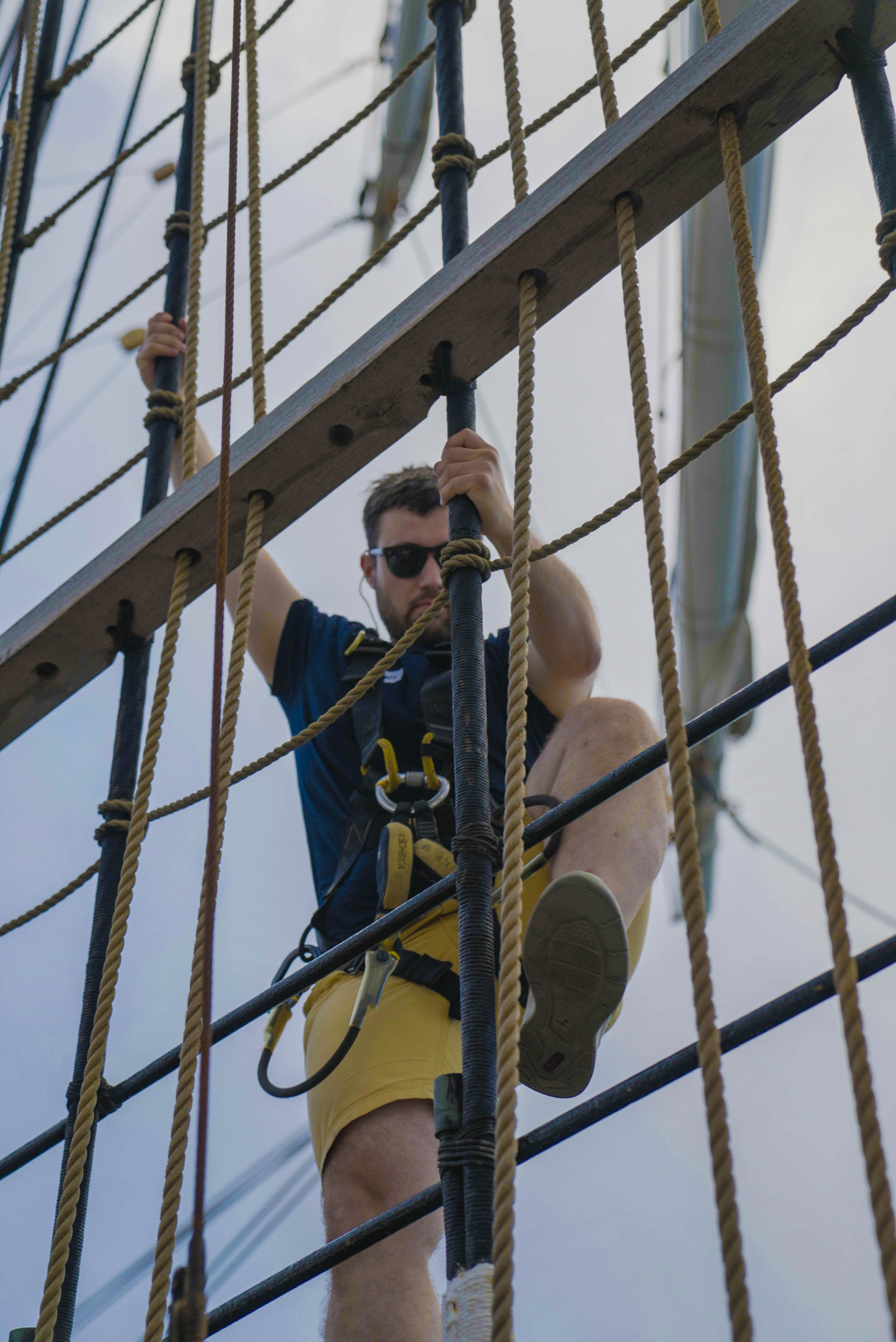Day 2 of our “voyage” and our plan of sailing to Tonga is still up in the air. The captain’s briefing has made it clear: We have more cases of COVID-19 on board, so we need to separate a larger group of people to their own sleeping areas, bathrooms and meal times. For us, who still test negative, this means restricting our comforts, our social interactions and our expectations for the coming days. While our teaching goes as planned, much of the intense, once-in-a-lifetime sailing experiences, we had all eagerly been looking forward to, has yet to start.
But the fun is still not fully off. We are granted a pinch of excitement in the form of rigg training! More specifically, today it is time to learn how to climb up to the mast. You know, for when we actually might set the sails, one fine day…. Waiting for my turn in the training, I feverishly skim through the handbook of Statsraad Lehmkuhl, fascinated by the sailors’ jargon.
You have probably seen these ladders on tall ships that lead up to the platforms, mounted between the different sections of the mast, right? Well, wrong, at least in the wording. What sailors climb up, are the shrouds, the thick steel wires that hold the mast in place, and the horizontal rat lines, made of rope, as steps in between. The destination of the climbing practice is the lowermost platform, where the topmast is fixed to the lower mast.
I could get carried away. I want to try it already. Will I make it up there?

Safety first – and then a lot of excitement
But first things first: we need some safety instructions from the crew. Our bearded shift leader shows us how to put on the safety harness. I step into the two leg straps, put the shoulder straps on like a backpack, and buckle up in the front. The carabiner in the front is fitted with two ropes, each with a shock absorber, the kind, you may know from via ferrata sets, and a carabiner at the end, to attach to safety wires.
Once all our straps are tightened, our shift leader shows us how it is done: while climbing up, you hold your hands only to the vertical shrouds and you step on the rat lines, two feet never on the same section. You do not go on the downwind side, where you could be blown off, and you do not do any silly “monkey business”. “That would be stupid and you would fall down”, our instructor keeps repeating. Nervously, my anticipation is rising.
We have talked the talk, now I walk the walk. I start climbing up and I am surprised how much grip in my hands the thick steel wires provide, how supported I feel by the rat lines. With a steadier heart, I climb further and quickly reach the end of the bottom shrouds. That is where the tricky part begins: I have to climb a short set of overhanging shrouds, to get over the edge of the platform. Now, the safety harness comes into play. I attach a carabiner to the safety wire.
Blindly, with a reach of faith, I grab the topmast shrouds above the platform and pull myself up. A wave of excitement over my accomplishment rushes through me. The view over the ship and the old familiar Suva Bay is breath-taking. I must be 10 or 15 metres high up in the air. Before I can climb down, my courage and faith are required once more: holding on to the topmast shrouds, I have to lean back into the abyss before my feet can get hold of the rat lines.
Thinking of the uncertainty of our current situation, I smile. Being up in the air like this is actually liberating and great fun. Triumphant, I return to the ship’s deck and our quarantine reality, feeling lighter than before.

